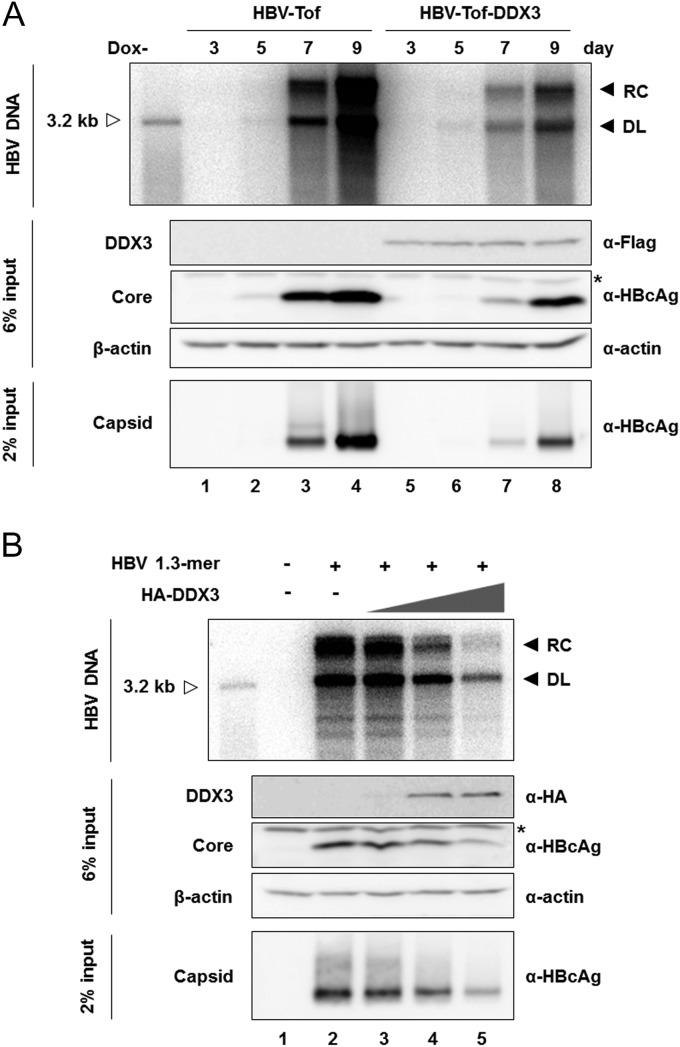FIG 1.
DDX3 inhibits HBV replication and gene expression. (A) HBV-Tof and HBV-Tof-DDX3 cells were seed in 35-mm plates and maintained in the presence of doxycycline (1 μg/ml). At confluence, the culture medium was replaced by medium without doxycycline to induce viral RNA synthesis. Cells were harvested at the indicated time points, and intracellular core DNAs were isolated and analyzed by Southern blotting. The replication intermediates (relaxed-circular [RC] and duplex-linear [DL] DNAs) are indicated as leftward filled arrows. A 3.2-kb size marker was coelectrophoresed and is denoted by a rightward open arrow. An aliquot of cell lysate was subjected to Western blot analysis with anti-Flag antibody for the detection of DDX3 and with anti-HBcAg antibody for the detection of core protein. A nonspecific band reproducibly detectable by HBcAg antibody is denoted by an asterisk. β-Actin served as a loading control. HBV core particles were resolved by native agarose gel electrophoresis, as described in Materials and Methods. (B) HepG2 cells were transfected with the HBV 1.3-mer replicon construct (1 μg) along with increasing amounts (0.5 μg, 2 μg, and 6 μg) of HA-DDX3 construct. Cells were harvested 4 days posttransfection. The readouts were measured as shown in panel A.

